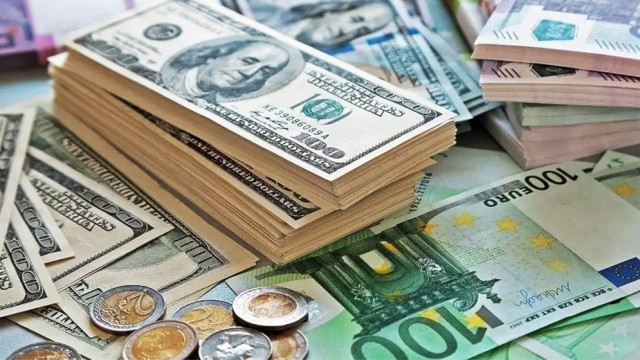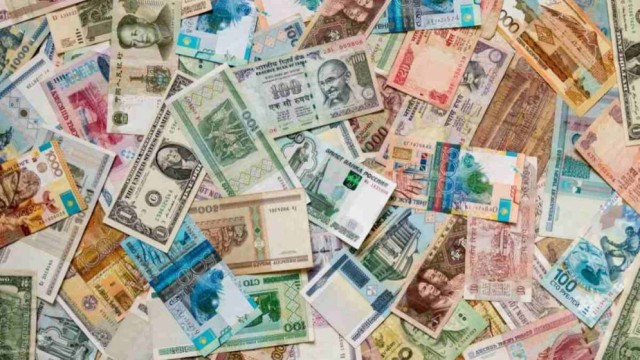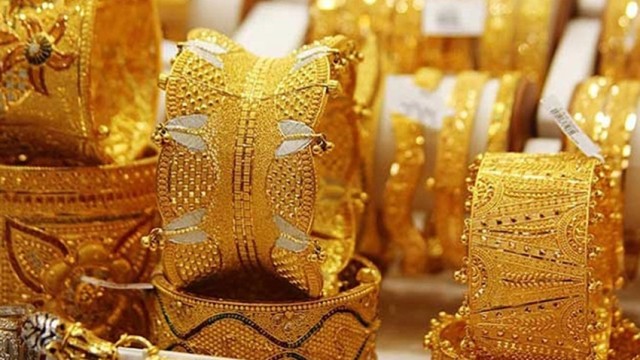Dhaka, April 7 (V7N) - Major stock indexes plunged in Asia on Monday as White House officials showed no sign of backing away from their sweeping tariff plans, and investors wagered the mounting risk of recession could see US interest rates cut as early as May.
Futures markets moved swiftly to price in almost five quarter-point cuts in US rates this year, pulling Treasury yields down sharply and hampering the dollar.
The carnage came as President Donald Trump told reporters that investors would have to take their medicine and he would not do a deal with China until the US trade deficit was sorted out. Beijing declared the markets had spoken on their retaliation plans.
"The only real circuit breaker is President Trump's iPhone and he is showing little sign that the market selloff is bothering him enough to reconsider a policy stance he has believed in for decades," said Sean Callow, a senior FX analyst at ITC Markets in Sydney.
Investors had thought the loss of trillions of dollars in wealth and the likely body blow to the economy would make Trump reconsider his plans.
"The size and disruptive impact of US trade policies, if sustained, would be sufficient to tip a still healthy US and global expansion into recession," said Bruce Kasman, head of economics at JPMorgan, putting the risk of a downturn at 60%.
"We continue to expect a first Fed easing in June," he added. "However, we now think the Committee cuts at every meeting through January, bringing the top of the funds rate target range down to 3.0%."
S&P 500 futures slid 3.1% in volatile trade, while Nasdaq futures dived 4.0%, adding to last week's almost $6 trillion in market losses.
The pain likewise engulfed Europe, with EUROSTOXX 50 futures down 3.0%, while FTSE futures lost 2.7% and DAX futures 3.5%.
Japan's Nikkei sank 6% to hit lows last seen in late 2023, while South Korea dropped 5%. MSCI's broadest index of Asia-Pacific shares outside Japan fell 3.6%.
Chinese blue chips lost 4.4%, as markets waited to see if Beijing would respond with more stimulus. Taiwan's main index, which had been shut on Thursday and Friday, tumbled nearly 10%, leading policymakers to curb short selling.
The gloomier outlook for global growth kept oil prices under heavy pressure, following steep losses last week.
Brent fell $1.35 to $64.23 a barrel, while US crude dived $1.395 to $60.60 per barrel.
NEVER MIND INFLATION
The flight to safe havens saw 10-year Treasury yields drop 8 basis points to 3.916%, while Fed fund futures jumped to price in an extra quarter-point rate cut from the Federal Reserve this year.
Markets swung to imply around a 56% chance the Fed could cut as soon as May, even though Chair Jerome Powell on Friday said the central bank was in no hurry on rates.
That dovish turn saw the dollar slip another 0.4% on the safe-haven Japanese yen to 146.26 yen , while the euro held firm at $1.0961 . The dollar shed 0.6% on the Swiss franc , while the trade-exposed Australian dollar dropped a further 0.4% .
Investors were also wagering the imminent threat of recession would outweigh the likely upward shove to inflation from tariffs.
US consumer price figures out later this week are expected to show another rise of 0.3% for March, but analysts assume it is just a matter of time before tariffs push prices sharply higher, for everything from food to cars.
Rising costs will also put pressure on company profit margins, just as the earnings season gets underway with some of the big banks due on Friday. Around 87% of US companies will report between April 11 and May 9.
"We expect during upcoming quarterly earnings calls fewer companies than usual will provide forward guidance for both 2Q and full-year 2025," analysts at Goldman Sachs said in a note.
"Rising tariff rates will force many companies to either raise prices or accept lower profit margins," they warned. "We expect negative revisions to consensus profit margin estimates in coming quarters."
Even gold was swept up in the selloff, easing 0.3% to $3,026 an ounce .
The drop left dealers wondering if investors were taking profits where they could to cover losses and margin calls on other assets, in what could turn into a self-feeding fire sale.
END/MSS/AJ






























Comment: